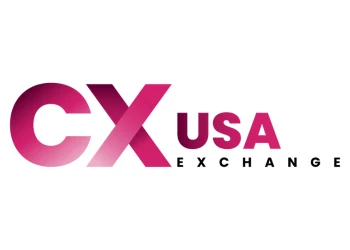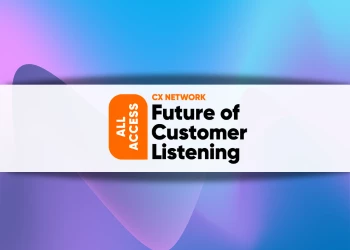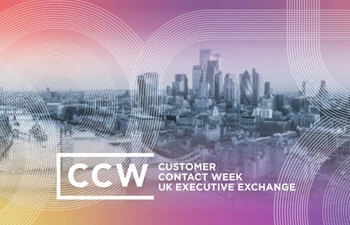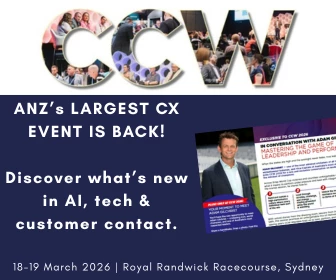A ‘cut and paste’ mindset: The ultimate no-no for customer engagement
Email overload and generic responses are putting customers off. Twilio’s Sam Richardson explains how to break free of monotony
Add bookmark
Each day, the average consumer is bombarded with a staggering 121 emails according to Venngage, and this overwhelms recipients, prompting fatigue and frustration as consumers attempt to navigate their inboxes.
It also makes it increasingly difficult for brands to break through the digital noise. With media consumption at an all-time high, the need for personalized, relevant and engaging consumer communication – across all customer touchpoints - has never been more crucial.
However, more brands than not are also reverting to a universal ‘cut and paste’ mentality when it comes to the content of their messages. This means engagement strategies become indistinguishable from one brand to another. Consumers are growing tired of the same generic interactions and “we’re experiencing high call volumes” excuses while on hold on the phone with brands.
This unimaginative ‘cut and paste’ strategy is not only damaging brands’ ability to leave a positive, lasting impression on customers, but it’s preventing them from building trusting, long-lasting and meaningful relationships, too.
So, what are some ways businesses can deliver memorable customer engagement that will help them stand out from the crowd?
Stepping away from ‘blandmin’
Our research revealed that UK consumers spend an average of 45 minutes a week on brand admin, with nearly half (49 percent) of consumers considering such tasks to be chores, while 47 percent also see them as unnecessary time drains. The term ‘blandmin’ – a blend of ‘bland’ and ‘admin’ – encapsulates the brand interactions that feel like dull, time-consuming and generic administrative tasks.
With such approaches fueling disengagement, frustration and even resentment, there’s rationale for brands to inject some creativity and personality into their customer communications, while streamlining and simplifying interactions.
For example, voice AI agents are now advanced and widespread in customer interactions – all without having to wait on hold to speak to a human agent. However, if the customer still needs to speak to an agent, there are many tactics brands could adopt rather than reverting to repetitive and generic stock excuses, such as “we’re experiencing high call volumes – thank you for your patience”, or attempts to redirect users with “did you know you can do this online?”
While on hold, brands could share personalized offers and freebies as goodwill gestures, or even have interactive voice response games, riddles and quizzes, pre-recorded stories or jokes, or personalized music playlists.
This will not only help pass the time spent on brand admin, but crucially make customers’ brand experiences less bland.
The magic formula for boosting brand loyalty
By abandoning the ‘cut and paste’ approach, brands can also boost customer loyalty. We found that 40 percent of consumers say they are more likely to make repeat purchases when brands use their preferred channels, demonstrating the business return that genuine customer understanding and personalized communication can have.
So, how can brands achieve personalization at scale?
It all comes down to the magic formula: communication channels + contextual data (customer interaction history, preferences and their reason for reaching out) + artificial intelligence
Firstly, leveraging the first-party data consensually shared by customers across different communication channels can help brands better understand them. Using this insight, brands can build incredibly detailed unified profiles for each and every customer.
This contextual data can then be leveraged by AI to deliver hyper-personalized customer engagement; it can run potentially millions of individual marketing campaigns at once that are hyper-targeted to the intended recipient. This will help end customers feel truly seen and understood and create opportunities for creative personal engagement.
Customers can expect to receive personalized offers and product recommendations that truly resonate with them, while marketers can say goodbye to ineffective generic emails that go unread and lead to unsubscribing.
And many brands are already on board with this approach. From November 27 to December 3, 2024 (coinciding with Black Friday and Cyber Week), Twilio Segment delivered 254.2 billion rows to its customers' data warehouses. This shows the scale at which Twilio is processing and managing customer data to help brands deliver personalization at scale.
Why customer calls do matter
The communication channels at our disposal have tons of potential – brands just need to shift their mindset and deploy the right tools to better leverage them.
Indeed, too many brands see their contact centers as a deprioritized cost burden. Contact centers are the frontline of a brand’s customer engagement, serving as a channel to not only handle customer queries, but also build strong customer-brand relationships – if utilized smartly.
An example of a brand that has significantly enhanced its customer experience and contact centers is travel company Tourlane. The company implemented a digital engagement center that streamlines call routing and integrates multiple data sources about the individual customer for efficient issue resolution. By investing in customer engagement, Tourlane now answers each call quickly and connects customers with the right person to resolve their requests.
Due to a rapid increase in audio quality, Tourlane saw an improvement in their customer communication. The company’s new customer engagement strategies have provided customers with the most personalised booking and travel experience possible. Having this intelligence at their disposal, in an accessible format, creates a far more valuable and informed experience for both parties. Rather than providing a universal ‘cut and paste’ experience, AI empowers contact agents to ‘design’ their customer experience offering for every customer.
Advanced AI-fueled chatbots and copilot tools can also lighten the load on human agents, allowing them to focus more of their time and attention on resolving more intricate problems and providing customer experience, not just customer service.
Saying goodbye to cut and paste
With consumers’ digital consumption increasing and attention spans and patience decreasing, delivering a personalized customer communication strategy has never been more important. And in an increasingly competitive market, the ‘one size fits all’ approach simply won’t cut it anymore when it comes to customer loyalty.
To thrive in today’s digital world, brands must prioritize personalization and creative engagement tactics to create memorable, engaging and meaningful interactions with their customers.
This departure from the unimaginative ‘cut and paste’ approach will not only leave a lasting impression, but will ensure customers feel valued, understood and less like a number among the masses.

























